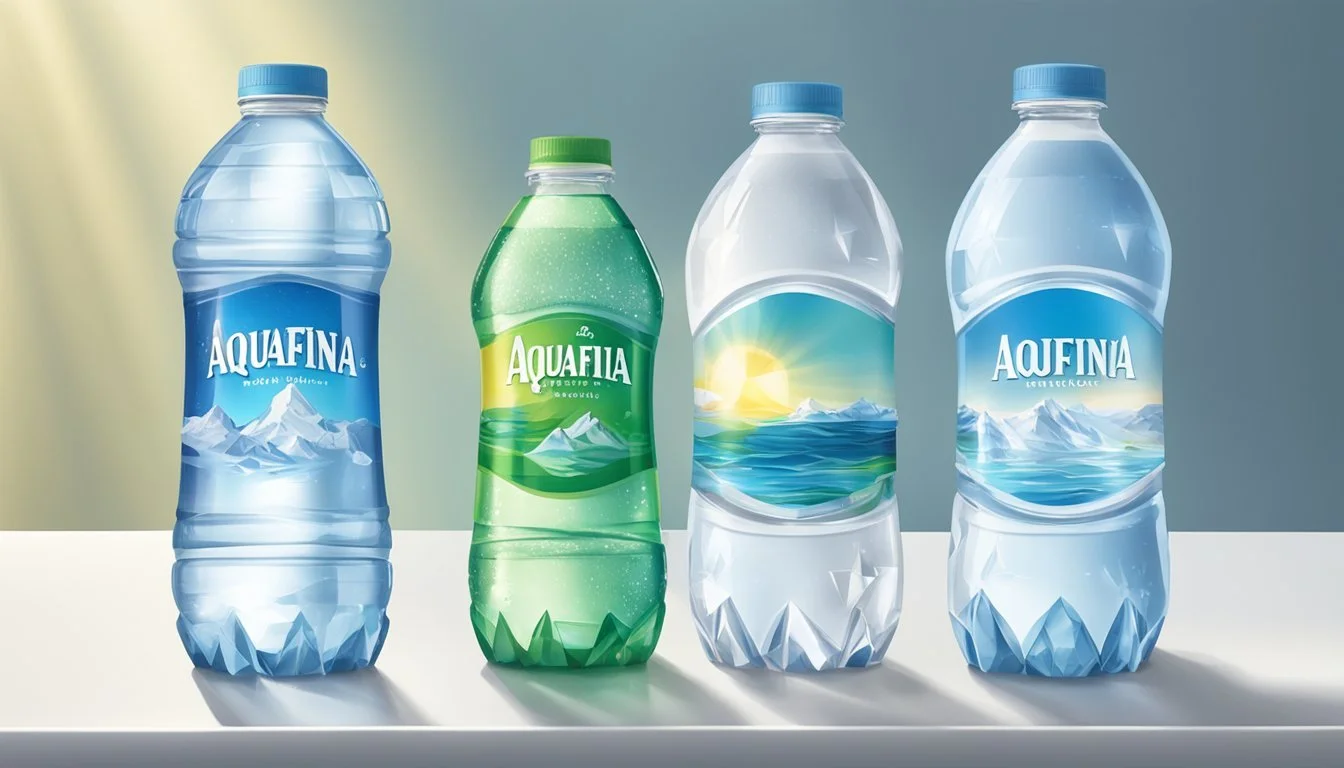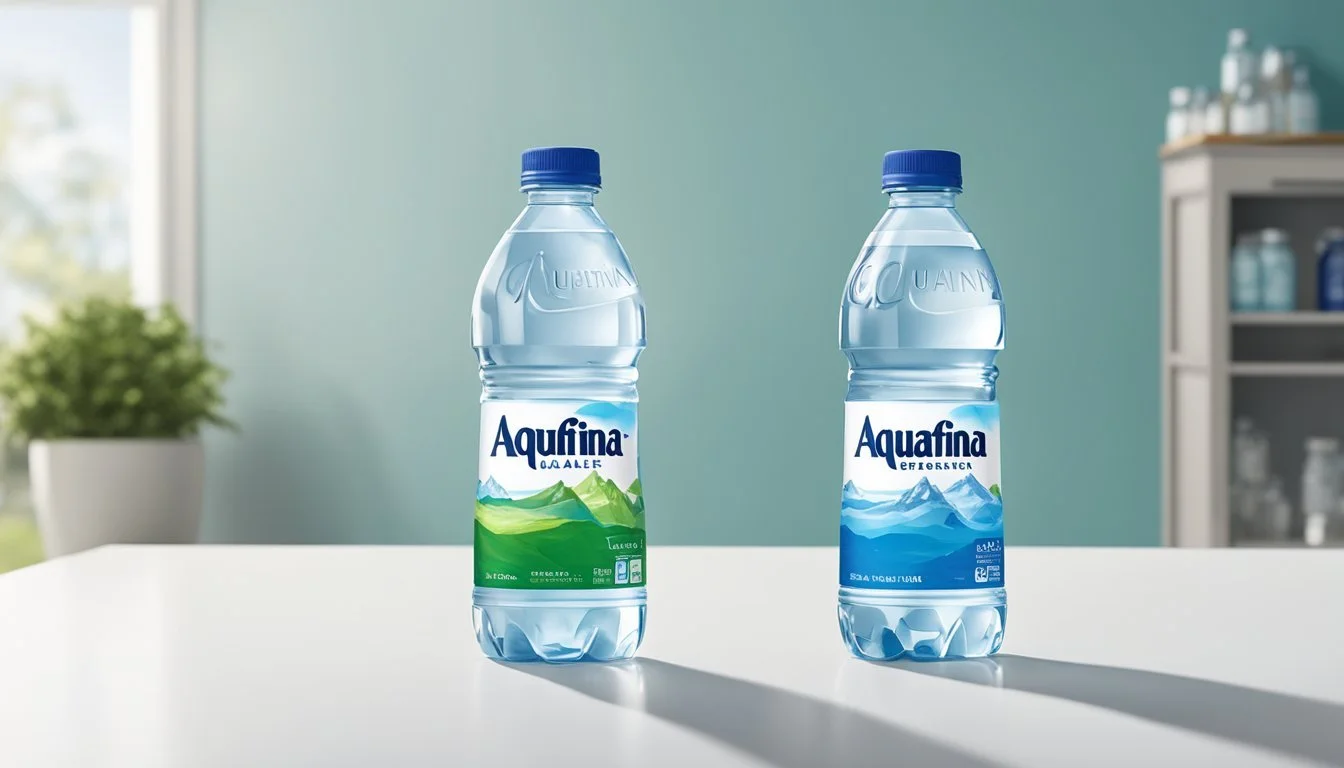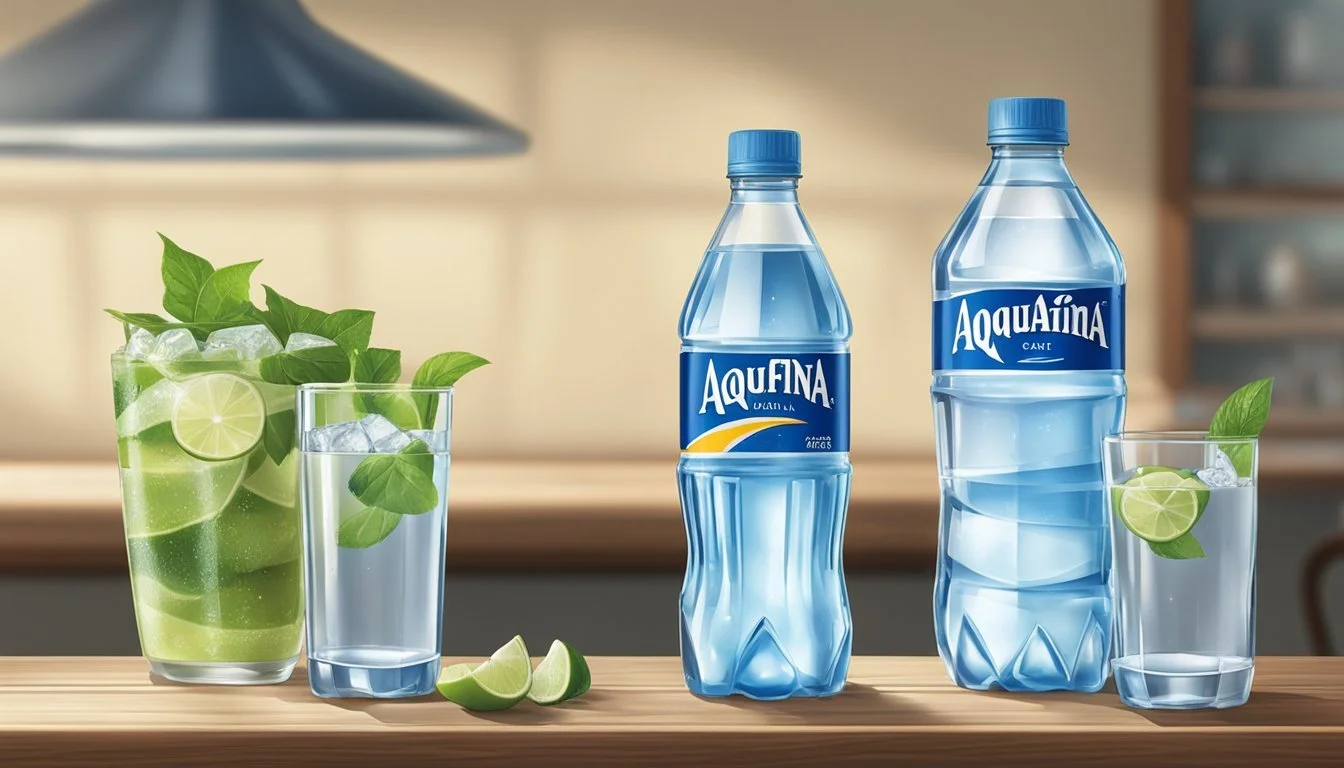Aquafina vs. Crystal Lake
Comparing Bottled Water Brands
Aquafina and Crystal Lake are two well-known bottled water brands that consumers often compare. Aquafina, produced by PepsiCo, is praised for its pure and refreshing taste, achieved through a rigorous purification process. On the other hand, Crystal Lake water boasts a natural spring source, offering a crisp and clean profile.
Consumers look for reliability and taste when choosing bottled water. When it comes to Aquafina, its highly filtered water ensures a consistent and pleasant experience, making it a popular choice for daily hydration. In contrast, Crystal Lake, sourced from natural springs, provides a distinct, fresh flavor that appeals to those who prefer a more natural taste.
The choice between Aquafina and Crystal Lake frequently comes down to personal preference. Some appreciate Aquafina's commitment to purity, while others lean toward the natural essence of Crystal Lake. By understanding the key differences between these brands, consumers can make an informed decision on which bottled water best suits their needs.
History and Origins
Aquafina and Crystal Lake both offer distinct histories that trace back to unique geographical sources, which have contributed to their reputation and standing in the bottled water market.
Aquafina's Beginnings
Aquafina was first distributed in 1994 in Wichita, Kansas. Produced by PepsiCo, it quickly grew from its modest Midwestern roots to become a leading name in the bottled water industry. With a focus on purification through a seven-step process, Aquafina ensures clean, purified water. This process removes minerals and contaminants, making it a significant choice among those preferring pure water.
Aquafina has since expanded its brand to include not just water but various other products like flavored water and even skincare items. While its origin story is notable for its simplicity, Aquafina's dedication to purity and quality has played a key role in its popularity.
Crystal Lake's Source
Crystal Lake sources its water from the French Alps, tapping into natural springs known for their clarity and mineral content. The water filters through layers of volcanic rock, which is believed to enhance its purity and contribute beneficial minerals. This process of natural filtration gives Crystal Lake a unique taste profile that has been appreciated by many.
Known for its pristine source, Crystal Lake has built a reputation for delivering high-quality, mineral-rich water. This connection to the French Alps sets it apart in the market, highlighting the importance of geological origins in defining the quality and character of bottled water.
Brand Profiles
Aquafina and Crystal Lake are leading brands in the bottled water market, each backed by major corporations and distinct in their approaches to consumer needs and environmental concerns.
Ownership and Market Position
Aquafina is a product of PepsiCo, a global food and beverage giant. It benefits from extensive distribution networks and strong brand recognition. The water undergoes a rigorous 7-step HydRO-7 filtration process, highlighting its commitment to purity and quality.
In contrast, Crystal Lake's ownership details are less prominent, but it targets a niche market valuing natural water sources. Although not as widely recognized as Aquafina, it garners a loyal consumer base seeking alternatives to mass-produced options.
Environmental Responsibility
PepsiCo emphasizes sustainability with Aquafina through initiatives to reduce BPA in bottles and increase recycling efforts. The company aims to make 100% of its packaging recyclable by 2025.
Crystal Lake positions itself as eco-friendly, using biodegradable materials and supporting local water conservation. Its smaller scale allows for innovative, eco-conscious practices, appealing to environmentally-aware consumers.
Both brands prioritize minimizing their ecological impacts through various strategies, underlining their roles as responsible players in the bottled water market.
Water Source and Purification
Aquafina relies on a comprehensive purification process, while Crystal Lake offers naturally sourced spring water. Understanding these different approaches helps highlight the key characteristics of each brand.
Aquafina Purification Process
Aquafina uses an advanced Hydro-7 step purification process. This involves multiple stages, including reverse osmosis, ultraviolet light, and ozone sterilization. Aquafina's water starts from municipal sources, ensuring that local tap water is transformed into high-quality purified water.
The process eliminates impurities and contaminants, surpassing EPA standards for bottled water. Steps like ultraviolet light and ozone ensure that any remaining bacteria or viruses are neutralized.
This rigorous method makes Aquafina reliable for those who prefer purified over natural spring water. Each bottle offers consistent purity, a key factor for consumers who prioritize safety and cleanliness in their drinking water.
Crystal Lake Natural Purity
Crystal Lake draws its water from an underground spring, offering natural spring water that is locally renowned for its purity. This natural source eliminates the need for extensive purification processes.
The water is filtered naturally through layers of earth, which helps in removing impurities. Since it's sourced directly from a natural spring, it retains minerals that can enhance taste and health benefits.
Crystal Lake water meets and often exceeds EPA drinking water standards. Many consumers prefer it for its natural origin and absence of extensive chemical treatments. Natural purity is a significant selling point for those seeking water as close to its natural state as possible.
Health and Quality Considerations
When assessing Aquafina and Crystal Lake, it is essential to evaluate both their mineral content and adherence to quality standards. These factors directly impact health benefits and water purity.
Mineral Content Analysis
Aquafina is known for its rigorous HydRO-7 filtration process, which claims to reduce a broad range of substances that might be present in other bottled waters. However, this extensive purification process also strips the water of natural minerals.
In contrast, Crystal Lake emphasizes retaining essential minerals and electrolytes during its production process. This inclusion can be beneficial for hydration and may contribute positively to health. Crystal Lake's water typically contains calcium, magnesium, and potassium, which are important for maintaining electrolyte balance and fluid retention.
A simple comparison:
Mineral Aquafina Crystal Lake Calcium Minimal Present Magnesium Minimal Present Potassium Minimal Present
Quality Testing and Standards
Both brands adhere to strict quality standards, but their testing processes differ. Aquafina utilizes a multi-step filtration system known as HydRO-7. This process aims to ensure the removal of impurities, resulting in water that is free from almost all contaminants.
Crystal Lake focuses on maintaining a high pH level to keep the water safe and refreshing. Their water is regularly tested to ensure compliance with industry standards for both purity and quality.
Aquafina's emphasis on enhancing water purity through extensive filtering may appeal to those prioritizing contaminant-free water. Crystal Lake prioritizes retaining natural minerals and electrolytes, which can be beneficial for overall metabolism and health.
Taste Profiles
Aquafina and Crystal Lake present distinct taste profiles that cater to different consumer preferences. By analyzing their flavor differences and consumer taste preferences, we can gain a clear understanding of their unique characteristics.
Flavor Differences
Aquafina boasts a clean and crisp taste thanks to its rigorous purification process, which removes dissolved solids and impurities. This leads to a mildly sweet and neutral flavor, often described as refreshing. Aquafina's purification involves reverse osmosis and other filtration methods, ensuring a consistent taste.
Crystal Lake, on the other hand, sources its water from natural springs, offering a distinctly mineral-rich flavor. This water tends to have a subtle earthy undertone with a slight mineral tang, creating a more robust taste profile. The natural minerals contribute to its unique character, making it a favorite for those who appreciate a more complex flavor.
Consumer Taste Preferences
Consumers often exhibit clear preferences when it comes to bottled water. Many prefer Aquafina for its neutral and predictable taste, making it a versatile choice for various occasions. The consistency in flavor appeals to individuals who seek reliability in their drinking water.
In contrast, Crystal Lake attracts those who enjoy the nuances of mineral flavors. The spring water's slight earthiness and mineral content provide a distinctive drinking experience. Consumers who prioritize natural sourcing and the health benefits of natural minerals often favor Crystal Lake over more purified options.
By understanding these flavor differences and consumer preferences, one can make an informed choice between Aquafina and Crystal Lake based on their taste expectations and personal preferences.
Product Varieties and Packaging
Aquafina and Crystal Lake offer distinct formats, catering to varying consumer needs. Both brands emphasize ease of use and feature several packaging options designed to appeal to different lifestyles.
Bottled Water Selection
Aquafina features multiple sizes, from small 12 oz bottles to larger 1.5-liter options. They also offer multipacks for bulk purchases. Specific varieties include:
Standard Purified Water: Available in multiple sizes.
Flavored Sparkling Water: Adding a twist with flavors like citrus and berry.
Enhanced Water: Infused with minerals for taste.
Crystal Lake provides a more focused lineup with fewer flavored options but maintains a strong presence in various sizes:
Spring Water: Staples range from portable 12 oz bottles to family-sized 2-liter bottles.
Naturally Flavored Sparkling Water: Limited but includes popular flavors like lemon and lime.
Packaging Innovations
Aquafina incorporates recycled plastic in their bottles, aiming for sustainability. Their packaging innovations include:
Eco-Flex Bottles: Lighter plastic usage reduces material waste.
Multipacks: Packed using thinner plastic wrapping to minimize environmental impact.
Crystal Lake focuses on simplicity and recyclability. Highlights include:
BPA-Free Plastic Bottles: Prioritizing health and safety, their bottles are free from harmful chemicals.
Biodegradable Labels: Ensuring that every part of the bottle is eco-friendly.
Both brands prioritize convenient packaging that caters to on-the-go consumers as well as those seeking eco-friendly choices.
Environmental and Ethical Impact
When comparing the environmental and ethical impact of Aquafina and Crystal Lake, it is essential to examine their sustainability practices and approaches to plastic waste and recycling. Both companies claim eco-friendly initiatives, yet differences in their strategies and effectiveness are noteworthy.
Sustainability Practices
Aquafina, produced by PepsiCo, emphasizes water conservation and reduction of its carbon footprint through its Positive Water Impact strategy. This includes initiatives like improving water-use efficiency and replenishing water sources. They aim to ensure their water usage is sustainable and measures are in place to mitigate potential environmental damage from their operations.
Crystal Lake positions itself as environment-conscious by sourcing water from sustainably managed natural springs. They promote minimal processing and local sourcing to reduce transport emissions. This method aims to maintain the quality and purity of their water while considering the ecological impact of their supply chain.
Plastic Waste and Recycling
Aquafina has specific goals to tackle plastic waste. The Aquafina comes in 100% recyclable bottles and has set ambitious targets to increase recycled content in their packaging. PepsiCo's broader corporate goals include making their plastic packaging recyclable, compostable, or biodegradable by a specified future date.
Crystal Lake also addresses plastic waste concerns by using bottles made from recycled polyethylene terephthalate (rPET). Their commitment to reducing plastic pollution includes community programs promoting responsible disposal and recycling efforts. Despite their smaller market presence, Crystal Lake emphasizes ethical considerations in waste management practices, ensuring that environmental impact remains minimal.
By observing these aspects, it’s clear both companies implement measures to mitigate environmental and ethical concerns, yet their methods and focus areas diverge significantly.
Comparative Analysis
Aquafina and Crystal Lake are two popular bottled water brands. This section examines their price points, market share, and consumer base to identify which offers better value to consumers.
Price Point Comparison
Aquafina is positioned as an accessible and affordable brand. Its pricing strategy focuses on providing a high-quality product at a reasonable cost, making it a common choice for everyday water consumption.
In contrast, Crystal Lake is marketed as a more premium option. While it might be pricier, it often justifies this with its superior filtration process and mineral content that appeals to a more discerning consumer base.
Consumers seeking value for money might lean towards Aquafina, as it balances quality and affordability. Those prioritizing taste and perceived quality might prefer the more expensive Crystal Lake.
Market Share and Consumer Base
Aquafina, a PepsiCo brand, enjoys significant market penetration. Its broad distribution network and extensive marketing have earned it a vast and loyal consumer base. This widespread accessibility ensures that it remains a household name in bottled water.
Crystal Lake, although less ubiquitous, targets a niche market that appreciates premium quality. Its market share, while smaller, consists of customers who prioritize mineral-rich and aesthetically pleasing water.
Aquafina's mass-market appeal is driven by its value proposition and brand recognition. Crystal Lake's market share, although limited, capitalizes on consumer willingness to pay a premium for perceived benefits.
Aquafina stands out for its affordability and extensive reach, whereas Crystal Lake appeals to premium segments that are seeking higher quality.
Customer Perception and Feedback
Customer perceptions of Aquafina and Crystal Lake are influenced by both brand reputation and social media presence. Specific consumer sentiments and feedback trends highlight key differences between the two brands.
Brand Reputation
Aquafina has established itself as a leading name in the bottled water market. It is widely recognized for its rigorous HydRO-7 filtration process that ensures pure and refreshing water. Consumers often praise Aquafina for its clean taste and consistent quality. Email feedback has revealed high customer satisfaction, with many loyal users sticking with the brand for years.
Crystal Lake, by contrast, is seen as a more niche player. Its reputation benefits from a natural spring source, appealing to consumers who prefer a more organic option. Feedback often highlights the refreshing taste and natural mineral content. However, it has a smaller market share compared to Aquafina, indicating a less widespread presence but a dedicated following.
Social Media Presence
On Twitter and other social media platforms, Aquafina maintains an active presence. The brand consistently engages with consumers through promotional campaigns, customer service interactions, and informative posts about hydration and health. This engagement has fostered a strong community of followers who frequently share positive experiences and promote the brand organically.
Crystal Lake leverages social media differently, focusing on Instagram to showcase its product in picturesque, nature-oriented settings. This approach appeals to environmentally conscious consumers and those who value aesthetic presentation. Although Crystal Lake has a smaller following, their posts often receive high engagement rates, indicating strong customer loyalty and appreciation for the brand's unique approach.
Final Thoughts
Aquafina and Crystal Geyser offer different attributes when it comes to bottled water. Each has its unique features and qualities that may sway consumer preference.
Overall Water Quality
Aquafina’s water quality hinges on its rigorous 7-step HydRO-7 purification process. This method ensures the removal of many substances that could impact taste and purity. Aquafina is known for its consistency and clarity, making it a reliable choice.
In contrast, Crystal Geyser is sourced from natural springs, marketed as spring water. This provides a more natural hydration experience. It does not undergo as extensive a purification process as Aquafina, but it has the appeal of a natural source. Consumers often appreciate the more mineral-rich profile of spring waters like Crystal Geyser.
Choosing Your Bottled Water
When selecting between Aquafina and Crystal Geyser, personal preference plays a significant role. Aquafina might be preferred for those who prioritize purity and consistency, thanks to its thorough filtration. It represents a highly controlled and refined option.
For those who favor a more natural origin, Crystal Geyser offers an attractive choice. Spring water enthusiasts often appreciate its natural mineral content and direct source. It's a robust option for individuals seeking an authentic spring water experience.
Consider availability, as Aquafina is typically more accessible due to its wide distribution. Crystal Geyser might be trickier to find but can be worth the search for those valuing natural spring water. Both provide quality hydration; the choice ultimately depends on individual preferences.









